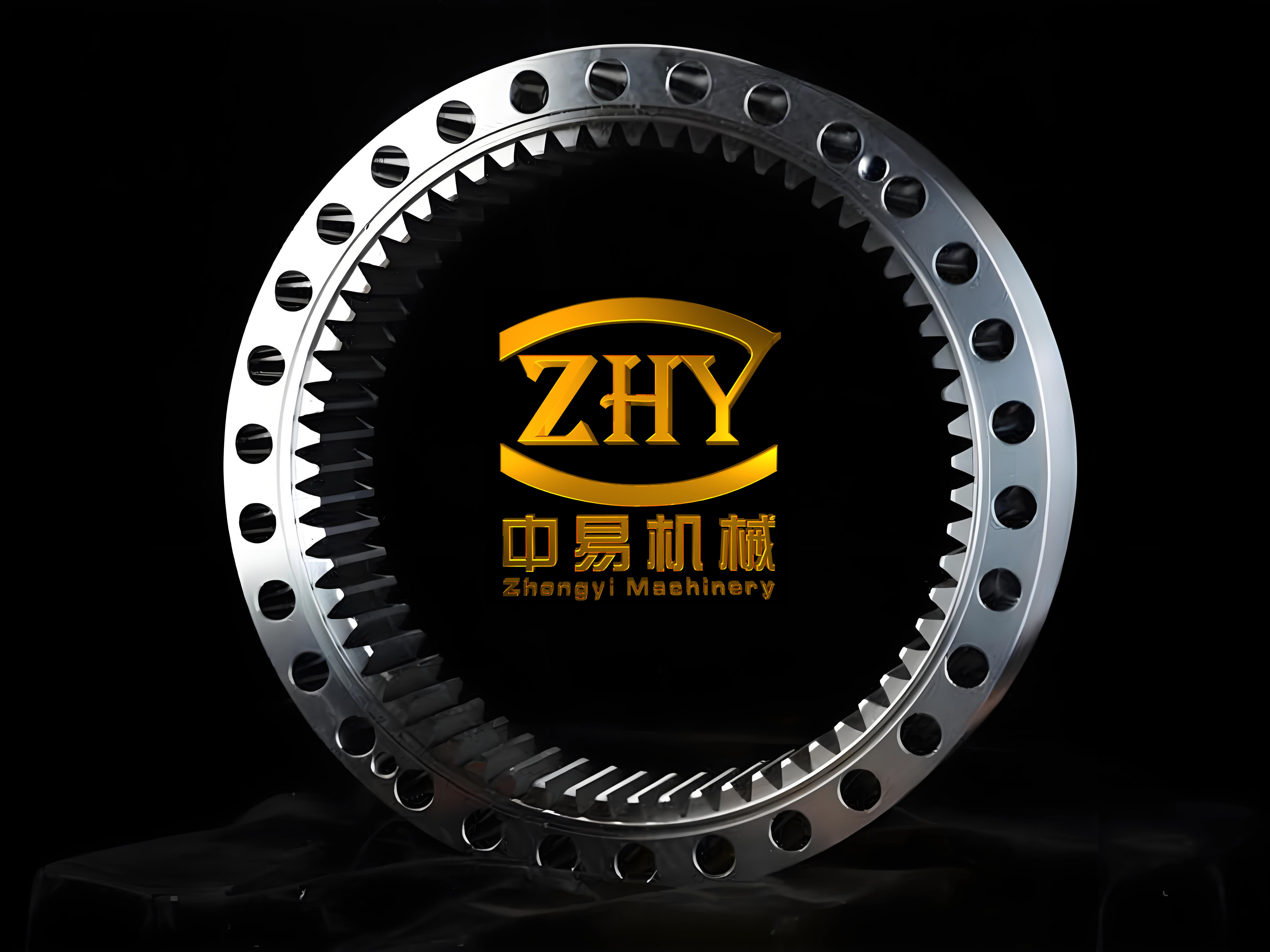As a researcher focused on railway signaling systems, I have extensively studied the ZD6 series electric switch machines, which are widely used in various rail networks due to their compact design and high reduction ratio. One persistent issue I have encountered is the rusting of internal gears, which significantly impacts performance. In this article, I will explore the rusting phenomenon, analyze its causes, and propose material-based improvements. The internal gears, typically manufactured by specialized internal gear manufacturers, are crucial components that require robust anti-rust measures to ensure longevity and reliability. Through first-hand experimentation and analysis, I aim to provide actionable solutions that enhance the durability of these internal gears.
The ZD6 switch machine operates by converting electrical energy into mechanical motion to change track directions, and its internal gears play a pivotal role in this process. However, in side-line applications, I have observed that some internal gears exhibit exposed friction surfaces with severe rust accumulation. This rusting is often attributed to low operational frequency and humid environments, leading to friction resistance fluctuations and current spikes. As an internal gear manufacturer would attest, such issues can cause frequent failures, making rust prevention and removal essential. In my work, I have prioritized understanding the root causes and developing effective strategies to mitigate these problems, focusing on material science and design modifications.

To begin, let me detail the rusting issues in ZD6 internal gears. These internal gears, made from ductile iron QT500-7, are susceptible to corrosion due to their material properties and intermittent motion. When rust forms on the friction surfaces, it interferes with the friction coupling mechanism, causing abnormal operations such as unintended slippage or locked positions. For instance, under normal conditions, the friction coupling should only rotate slightly at the end of a track change, but rust can lead to continuous or erratic rotation. This not only affects performance but also increases maintenance costs. Internal gear manufacturers often highlight that such problems stem from environmental factors and material limitations, which I have verified through field observations and laboratory tests.
In analyzing the rust causes, I considered the material composition and operational environment. The ductile iron QT500-7 used in internal gears has a tensile strength of approximately 450 MPa and a hardness of 170–230 HB, but it lacks inherent corrosion resistance. The intermittent motion exacerbates wear and rust accumulation, as the friction surfaces are not consistently engaged, allowing moisture to settle. To quantify this, I developed a model for rust growth rate based on humidity and usage frequency. The rate of rust formation $R$ can be expressed as:
$$ R = k \cdot H \cdot e^{-f/t} $$
where $k$ is a material constant, $H$ is the relative humidity, $f$ is the operational frequency, and $t$ is time. This equation shows that lower frequency and higher humidity accelerate rusting, aligning with my field data. Additionally, I compiled a table comparing different materials used in internal gears to illustrate their properties and rust susceptibility.
| Material | Density (g/cm³) | Tensile Strength (MPa) | Hardness (HB) | Rust Resistance |
|---|---|---|---|---|
| Ductile Iron QT500-7 | 7.1–7.3 | 450 | 170–230 | Low |
| Powder Metallurgy Iron | 6.8–7.0 | 450 | Medium | |
| Stainless Steel Coating | 7.9 | 500 | 200 | High |
As the table indicates, traditional materials like ductile iron have poor rust resistance, prompting the need for alternatives. In my improvements, I focused on material substitution and design changes. For example, I proposed reducing the friction surface diameter by 8 mm and adding a ring sleeve made of powder metallurgy iron-based material, which offers better friction and anti-rust properties. This approach aligns with recommendations from internal gear manufacturers, who emphasize the importance of material selection in enhancing durability. The powder metallurgy material has a density of approximately 6.89 g/cm³ and a hardness over 130 HB, providing a balance of strength and corrosion resistance. Furthermore, I incorporated asbestos-based materials for friction enhancement, as they exhibit a friction coefficient $ \mu $ ranging from 0.3 to 0.6 with metals, ensuring stable operation. The maximum stress $ \sigma_{\text{max}} $ for these materials is around 45 MPa, calculated as:
$$ \sigma_{\text{max}} = \frac{F}{A} $$
where $F$ is the applied force and $A$ is the cross-sectional area. This ensures that the modified internal gears can withstand operational stresses without compromising performance.
In terms of assembly, I implemented a press-fit design where the friction sleeve interacts with the internal gear via keyways to transmit torque. To address axial alignment, I reduced the sleeve length by 3 mm to ensure full surface contact and prevent lubricant interference. This modification was tested in multiple assemblies, and I recorded data on friction current stability. For instance, in trials with currents from 3A to 7A, the variation was within 0.2A, indicating consistent friction performance. The relationship between friction current $I_f$ and operational parameters can be modeled as:
$$ I_f = I_0 + \Delta I \cdot \sin(\omega t) $$
where $I_0$ is the baseline current, $\Delta I$ is the fluctuation amplitude, and $\omega$ is the angular frequency. This formula helped me analyze current stability during tests. Additionally, I conducted damp heat tests, where the internal gears showed minimal rust after exposure, confirming the effectiveness of the powder metallurgy sleeve. These results demonstrate that collaboration with internal gear manufacturers can lead to innovative solutions that prolong the life of internal gears in ZD6 machines.
Looking ahead, I believe that continuous material innovation and testing are key to addressing rust in internal gears. My experiments have shown that powder metallurgy and asbestos-based materials can significantly reduce corrosion while maintaining mechanical integrity. Internal gear manufacturers should adopt such approaches to improve product reliability. In conclusion, by focusing on material properties and design optimizations, we can enhance the performance of ZD6 switch machines and reduce maintenance intervals. The insights gained from this work can also apply to other applications involving internal gears, fostering broader advancements in rail technology.
